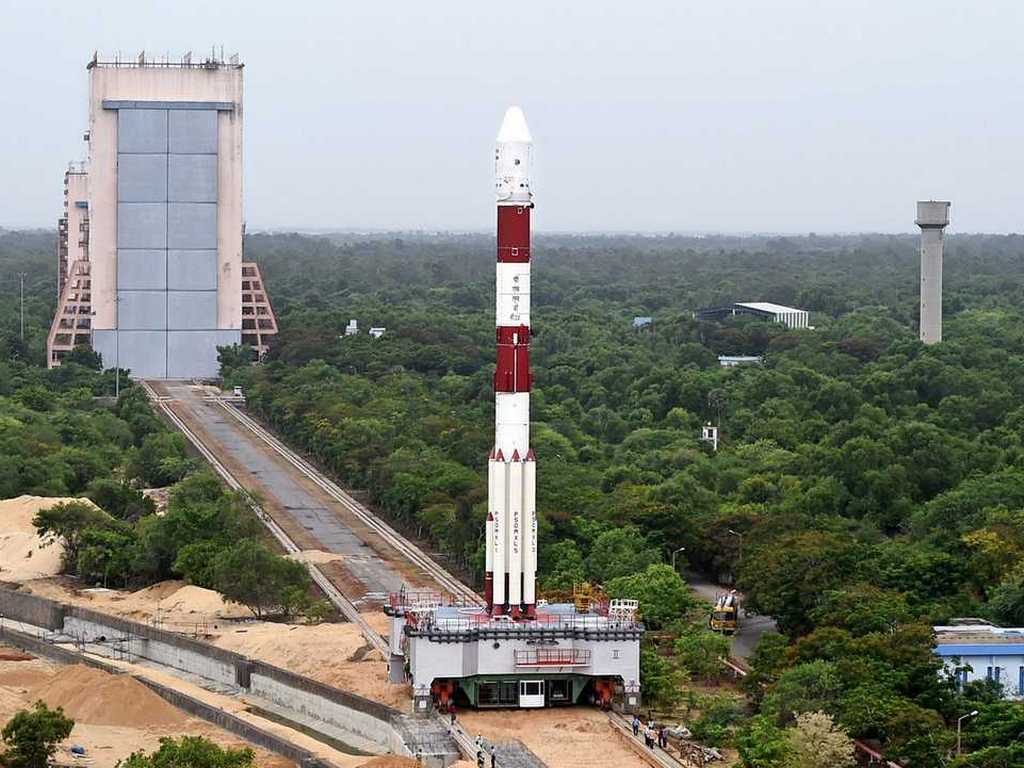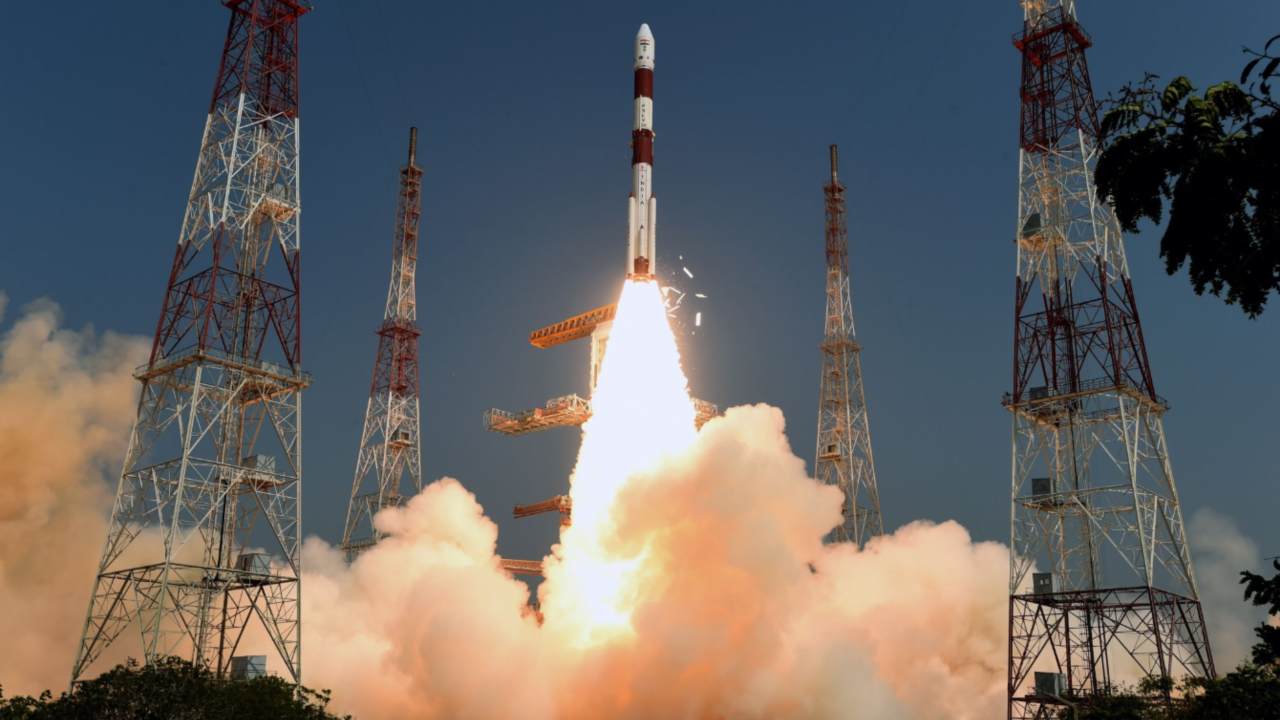The Indian Space Research Organisation (ISRO) launched the CartoSAT-3 Earth observation satellite from India along with thirteen commercial nanosatellites from the US today. All the satellites were carried by the PSLV-C47 launch vehicle with lift-off at 9.28 am IST from ISRO’s launchpad at the Satish Dhawan Space Centre (SDSC) SHAR, Sriharikota in Andhra Pradesh. The mission was first scheduled to launch on 25 November but it was postponed for reasons unknown. [caption id=“attachment_5636861” align=“alignnone” width=“1024”]
 Representational image.[/caption] CartoSAT-3 is the eight in a series of indigenous Earth observation satellites built by ISRO. With its highly-advanced remote sensing capability, CartoSAT-3 is a leap of advancement over its predecessor CartoSAT-2, with a wider spatial range (of view) and finer resolution (of up to 0.25 metres or 25 centimetres). It is undoubtedly one of the most advanced imaging satellites ever built by ISRO, with the capability to produce some of the most high-resolution aerial imagery in the world — certainly the highest of any ISRO satellites. Of the fourteen passengers on the PSLV-C47, thirteen are commercial nanosatellites from the US, part of a commercial arrangement between NewSpace India Limited (NSIL), Department of Space. The ridesharing customers with satellites onboard include Boston-based satellite communications company Analytical Space, American data and analytics company Spire Global, Cambodian small SAR-satellite manufacturers iQPS, and Luxembourg-based Kleos Space,
Spaceflight announced
.
Representational image.[/caption] CartoSAT-3 is the eight in a series of indigenous Earth observation satellites built by ISRO. With its highly-advanced remote sensing capability, CartoSAT-3 is a leap of advancement over its predecessor CartoSAT-2, with a wider spatial range (of view) and finer resolution (of up to 0.25 metres or 25 centimetres). It is undoubtedly one of the most advanced imaging satellites ever built by ISRO, with the capability to produce some of the most high-resolution aerial imagery in the world — certainly the highest of any ISRO satellites. Of the fourteen passengers on the PSLV-C47, thirteen are commercial nanosatellites from the US, part of a commercial arrangement between NewSpace India Limited (NSIL), Department of Space. The ridesharing customers with satellites onboard include Boston-based satellite communications company Analytical Space, American data and analytics company Spire Global, Cambodian small SAR-satellite manufacturers iQPS, and Luxembourg-based Kleos Space,
Spaceflight announced
.
CartoSAT-3 Launch Highlights Updates: PSLV-C47 mission is a success! All 14 satellites deployed into orbit
The PSLV-C47 will lift off carrying fourteen satellites on 27 November at 9.28 am IST from ISRO’s launchpad.
)
ISRO successfully completes the PSLV-C47 mission
Read all the information about the launch and the satellites here .
13 missions until March
K Sivan confirmed that ISRO has 13 more missions to accomplish by March.
ISRO Chairman speaks on PSLV-C47 success
ISRO Chairman K Sivan congratulates his entire team on the successful launch of all the 14 satellites onboard the PSLV-C47.

PSLV-C47 mission successful
All the 14 satellites have been deployed. The mission director has announced that the PSLV-C47 mission has been successfully accomplished. Kudos ISRO!
SuperDove satellites deployment initiated
The 12 SuperDove “Flock” satellites have started separating from the vehicle one-by-one at regular intervals of 20 seconds.

CartoSAT-3 solar panels deployed
Now in orbit, the solar panels on the CartoSAT-3 satellite have been deployed.
Meshbed satellite separated
The ‘Meshbed’ satellite has successfully separated from the fourth stage.
CartoSAT-3 satellite has successfully separated
The CartoSAT-3 has successfully separated from the fourth stage.

Fourth stage shut off
Optimal orbital conditions have been achieved and the satellite will be injected into orbit soon.
Third stage separated
The third stage of the rocket has separated and the fourth stage has started.

Second stage of the rocket has separated
The second stage of the PSLV-C47 has separated and the third stage rocket has ignited, functioning normally.
Payload fairing has separated
The heat shield on the rocket has separated.
First-stage separated
The first stage of the rocket has separated and the second stage engine has fired up, functioning normally.
And it’s a lift-off!
The PSLV-C47 is up in the sky and ISRO confirms a successful launch blasting in full power.

Other payloads on the PSLV-C47
Apart from India’s CartoSAT-3, the launch will also include 12 SuperDove “Flock” satellites, and a communication satellite technical proof-of-concept satellite called “MESHBED”. The SuperDoves, developed by Planet Labs, are part of a network of smallsats designed for earth observation. These satellites, an upgraded iteration of the 26 “Doves” already in orbit, offer higher imaging quality, sharper images, more vibrant colors, and increased accuracy for advanced/time-series analysis. If successfully launched, Planet intends to expand its network with more such SuperDoves, and bring them closer to a planned project the “Next Generation Planetscope”.
Analytical Space Inc’s (ASI) satellite on the PSLV-C47 is a technical demonstration. With its ‘Meshbed’ satellite, ASI intends to test a space technology that will allow its users (on Earth) to gain faster access to data from satellites. The spacecraft features a patented, inexpensive antenna design from MITRE that could help enable faster access to space-based data. It can be used for a variety of applications including integrated communications and navigation as well as in government missions that need tactical communications, intelligence, surveillance or remote reconnaissance.
Some more information about CartoSAT-3
CartoSAT-3 is undoubtedly one of the most advanced imaging satellites ever built by ISRO, with the capability to produce some of the most high-resolution aerial imagery in the world — certainly the highest of any ISRO satellites. It will also image across multiple spectra — panchromatic (captures all visible colours of light), multispectral (captures light within specific ranges in the electromagnetic spectrum) and hyperspectral (captures light from across the electromagnetic spectrum) earth observation mission.
Automatic launch sequence initiated
The onboard computer on the PSLV-C47/CarsoSAT-3 now has full control to begin the launch.
T-minus 16 minutes to launch
The PSLV/CartoSAT-3 has been given a go-ahead for launch.
PSLV/CartoSAT-3 livestream is a go!
We are less than 30 minutes from the launch of the PSLV/CartoSAT-3 mission.
Watch the PSLV/CartoSAT-3 launch live
If you wish to watch the launch of the PSLV/CartoSAT-3 mission live, here’s how you can do so .
Propellant filling stage completion
Until now, the fourth and second propellant filling stages have been completed.
CartoSAT-3 Earth observation satellite
One of the main satellites launching aboard the PSLV is the CartoSAT-3, the eight in a series of indigenous Earth observation satellites built by ISRO. With its highly-advanced remote sensing capability, CartoSAT-3 is a leap of advancement over its predecessor CartoSAT-2, with a wider spatial range (of view) and finer resolution (of up to 0.25 metres or 25 centimetres).
CartoSAT-3 launch today
The Indian Space Research Organisation (ISRO) is launching the CartoSAT-3 satellite today along with thirteen other satellites from the US from the Satish Dhawan Space Centre (SDSC) SHAR, Sriharikota in Andhra Pradesh. Stay tuned for the live updates.
)
)